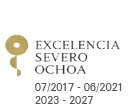 0000-0002-5375-0142
0000-0002-5375-0142The discovery of cell-secreted extracellular vesicles (EVs) including EXOSOMES has provided a new cellular component with the ability to influence different biological and pathological processes. In the last years these vesicles has attracted the interest in clinical, pharmaceutical and manufacturing areas. All cellular systems in culture or forming part of a tissue in the body secrete EVs containing proteins, nucleic acids, lipids, and metabolites into the environment. They have been shown to act as important mediators of intercellular communication and regulators of cellular niches, and their altered characteristics in many diseases suggest them to be helpful for the diagnostic purposes.
Since 2006, our group has been immersed in the study of exosomes, gaining extensive expertise in isolating and characterizing these vesicles from various biofluids and cell lines under both normal and pathological conditions.
Research line 1: Elucidating the functional role of exosomes in metabolism
The goal is to identify genes, proteins and metabolites that form part of the exosomes in normal and pathological conditions. The improvement in the knowledge of the cargo of these vesicles will provide also clues about the functional role and implications of them in biology. Technological advances in the past 20 years have permitted large-scale measurements of biochemical and cellular constituents for study as a unified whole, creating all the ‘-omics’ technologies including proteomics, genomics and more recently metabolomics. The group has already showed the presence in hepatic exosomes of an elevated number of metabolic enzymes involved in endogenous and xenobiotics compounds, and we are currently studying the implications of these vesicles in the metabolism of those compounds.
Research line 2: Developing diagnosis and therapeutics tools based on exosomes
Exosomes constitute a platform to identify low-invasive disease biomarkers. The group is currently comparing the composition of exosomes in different scenarios to generate a repertoire of differentially expressed molecules that could be candidate biomarker of disease. In addition, behind the idea to obtain a "magic bullet" – a desired activity encapsulated in a vehicle with a known specific target- the group is trying to define the cellular preferences displayed by exosomes. In this aspect the group is focused on identifying the molecular determinants that define the cellular specificity, and the molecular machinery involved in the biogenesis of exosomes. A better knowledge of the biology and the mechanisms of action of exosomes will help to manipulate these vesicles with therapeutics purposes.
Collaborations
Member of national (GEIVEX) and international (ISEV) societies for studying extracellular vesicles. Member of COST actions (SYSGENET, MEHAD, DILI-network, PlasTHER) and consortiums of European projects (proEVLifeCycle, EVCA, halt-RONIN, EV-Glio).
-
Group Leader
Juan Manuel Falcón
Ikerbasque Research Professor RESEARCH ASSISTANT -
Esperanza González Jiménez
POSTDOCTORAL RESEARCHER -
Ana Talamillo
-
Félix Royo
TECHNICIANS / DOCTORAL CANDIDATES -
Patricia Hernández Lopez
-
Silvia López Sarrió
-
Stefano Vecchione
-
Marc Liébana Jordán
-
Ana Laín
Members
Latest Publications
Deciphering the dialogue between the bovine blastocyst and the uterus: embryo-induced alterations in extracellular vesicle protein content from an ex vivo model and the in vivo environment
Mazzarella, R; Sánchez, JM; Egido, SG; McDonald, M; Alvarez-Barrientos, A; González, E; Falcón-Pérez, JM; Azkargorta, M; Elortza, F; González, ME; Lonergan, P; Rizos, D; Fernandez-Fuertes, B; ...
JOURNAL OF ANIMAL SCIENCE AND BIOTECHNOLOGY
2025-10-24
Roadblocks of Urinary EV Biomarkers: Moving Toward the Clinic
Droste, M; Puhka, M; van Royen, ME; Ng, MSY; Blijdorp, C; Alvarez-Llamas, G; Borras, FE; Buescher, AK; Bussolati, B; Dear, JW; Falcon-Perez, JM; Giebel, B; Grange, C; Hoorn, EJ; Leivo, J; Lenassi, ...
JOURNAL OF EXTRACELLULAR VESICLES
2025-07-20
Metabolic Signature in Combination with Fecal Immunochemical Test as a Non-Invasive Tool for Advanced Colorectal Neoplasia Diagnosis
Albóniga, OE; Cubiella, J; Bujanda, L; Aspichueta, P; Blanco, ME; Lanza, BR; Alonso, C; Falcón-Pérez, JM;
CANCERS
2025-07-15
Embryo-Induced Changes in the Protein Profile of Bovine Oviductal Extracellular Vesicles
Mazzarella, R; Sánchez, J; Fernandez-Fuertes, B; Egido, SG; McDonald, M; Alvarez-Barrientos, A; González, E; Falcón-Pérez, JM; Azkargorta, M; Elortza, F; González, ME; Lonergan, P; Rizos, D; ...
MOLECULAR & CELLULAR PROTEOMICS
2025-04-01
Intra and inter-organ communication through extracellular vesicles in obesity: functional role of obesesomes and steatosomes
Lago-Baameiro, N; Camino, T; Vazquez-Durán, A; Sueiro, A; Couto, I; Santos, F; Baltar, J; Falcón-Pérez, JM; Pardo, M;
JOURNAL OF TRANSLATIONAL MEDICINE
2025-02-20
Metabolic Profiling of Brain Tissue and Brain-Derived Extracellular Vesicles in Alzheimer's Disease
Hernandez, P; Rackles, E; Alboniga, OE; Martínez-Lage, P; Camacho, EN; Onaindia, A; Fernandez, M; Talamillo, A; Falcon-Perez, JM;
JOURNAL OF EXTRACELLULAR VESICLES
2025-02-01
Reproducibility of extracellular vesicle research
Crescitelli, R; Falcon-Perez, J; Hendrix, A; Lenassi, M; Minh, LN; Ochiya, T; Hooten, NN; Sandau, U; Théry, C; Nieuwland, R;
JOURNAL OF EXTRACELLULAR VESICLES
2025-01-01
Systemic messenger RNA replacement therapy is effective in a novel clinically relevant model of acute intermittent porphyria developed in non-human primates
Córdoba, KM; Jericó, D; Jiang, L; Collantes, M; Alegre, M; García-Ruiz, L; Manzanilla, O; Sampedro, A; Herranz, JM; Insausti, I; de la Cuesta, AM; Urigo, F; Alcaide, P; Morán, M; Martín, MA; ...
GUT
2024-10-13
Beyond basic characterization and omics: Immunomodulatory roles of platelet-derived extracellular vesicles unveiled by functional testing
Palviainen, M; Puutio, J; Ostergaard, RH; Eble, JA; Maaninka, K; Butt, U; Ndika, J; Kari, OK; Kamali-Moghaddam, M; Kjaer-Sorensen, K; Oxvig, C; Aransay, AM; Falcon-Perez, JM; Federico, A; Greco, ...
JOURNAL OF EXTRACELLULAR VESICLES
2024-10-01
Extracellular vesicles in tumor-adipose tissue crosstalk: key drivers and therapeutic targets in cancer cachexia
Ramos, CC; Pires, J; Gonzalez, E; Garcia-Vallicrosa, C; Reis, CA; Falcon-Perez, JM; Freitas, D;
EXTRACELLULAR VESICLES AND CIRCULATING NUCLEIC ACIDS
2024-09-01
Increased levels of circulating cell-free double-stranded nucleic acids in the plasma of glioblastoma patients
Rackles, E; Zaccheroni, E; Lopez, PH; Faletti, S; Del Bene, M; DiMeco, F; Pelicci, G; Falcon-Perez, JM;
JOURNAL OF EXTRACELLULAR BIOLOGY
2024-08-02
Cryogenic electron microscopy reveals morphologically distinct subtypes of extracellular vesicles among porcine ejaculate fractions
Parra, A; Barranco, I; Martínez-Díaz, P; González, E; Albóniga, OE; Cabrera, D; Falcón-Pérez, JM; Roca, J;
SCIENTIFIC REPORTS
2024-07-13
Three-Dimensional Hepatocyte Spheroids: Model for Assessing Chemotherapy in Hepatocellular Carcinoma
Royo, F; Garcia-Vallicrosa, C; Azparren-Angulo, M; Bordanaba-Florit, G; Lopez-Sarrio, S; Falcon-Perez, JM;
BIOMEDICINES
2024-05-28
Integration of proteomic and metabolomic analysis reveal distinct metabolic alterations of prostate cancer-associated fibroblasts compared to normal fibroblasts from patient's stroma samples
Bordanaba-Florit, G; Royo, F; Albóniga, OE; Clayton, A; Falcón-Pérez, JM; Webber, J;
BIOCHIMICA ET BIOPHYSICA ACTA-MOLECULAR BASIS OF DISEASE
2024-05-10
Reinforcing the Evidence of Mitochondrial Dysfunction in Long COVID Patients Using a Multiplatform Mass Spectrometry-Based Metabolomics Approach
Martínez, S; Albóniga, OE; López-Huertas, MR; Gradillas, A; Barbas, C;
JOURNAL OF PROTEOME RESEARCH
2024-04-03
Characterization of preovulatory follicular fluid secretome and its effects on equine oocytes during in vitro maturation
Luis-Calero, M; Marinaro, F; Fernández-Hernández, P; Ortiz-Rodríguez, JM; Casado, JG; Pericuesta, E; Gutiérrez-Adán, A; González, E; Azkargorta, M; Conde, R; Bizkarguenaga, M; Embade, N; Elortza, ...
RESEARCH IN VETERINARY SCIENCE
2024-03-11
Lipidomics and biodistribution of extracellular vesicles-secreted by hepatocytes from Zucker lean and fatty rats
Azparren-Angulo, M; Mleczko, J; Alboniga, OE; Kruglik, S; Guigner, JM; Gonzalez, E; Garcia-Vallicrosa, C; Llop, J; Simó, C; Alonso, C; Iruarrizaga, M; Royo, F; Falcon-Perez, JM;
JOURNAL OF EXTRACELLULAR BIOLOGY
2024-02-22
Minimal information for studies of extracellular vesicles (MISEV2023): From basic to advanced approaches
Welsh, JA; Goberdhan, DCI; ODriscoll, L; Buzas, EI; Blenkiron, C; Bussolati, B; Cai, HJ; Di Vizio, D; Driedonks, TAP; Erdbrügger, U; Falcon-Perez, JM; Fu, QL; Hill, AF; Lenassi, M; Lim, SK; ...
JOURNAL OF EXTRACELLULAR VESICLES
2024-02-01
Roadmap to DILI research in Europe. A proposal from COST action ProEuroDILINet
Lucena, MI; Villanueva-Paz, M; Alvarez-Alvarez, I; Aithal, GP; Björnsson, ES; Cakan-Akdogan, G; Cubero, FJ; Esteves, F; Falcon-Perez, JM; Fromenty, B; Garcia-Ruiz, C; Grove, JI; Konu, O; Kranendonk, ...
PHARMACOLOGICAL RESEARCH
2024-02-01
Characterization of Extracellular Vesicles from Human Saliva: Effects of Age and Isolation Techniques
Reseco, L; Molina-Crespo, A; Atienza, M; Gonzalez, E; Falcon-Perez, JM; Cantero, JL; Neri, C;
CELLS
2024-01-01





